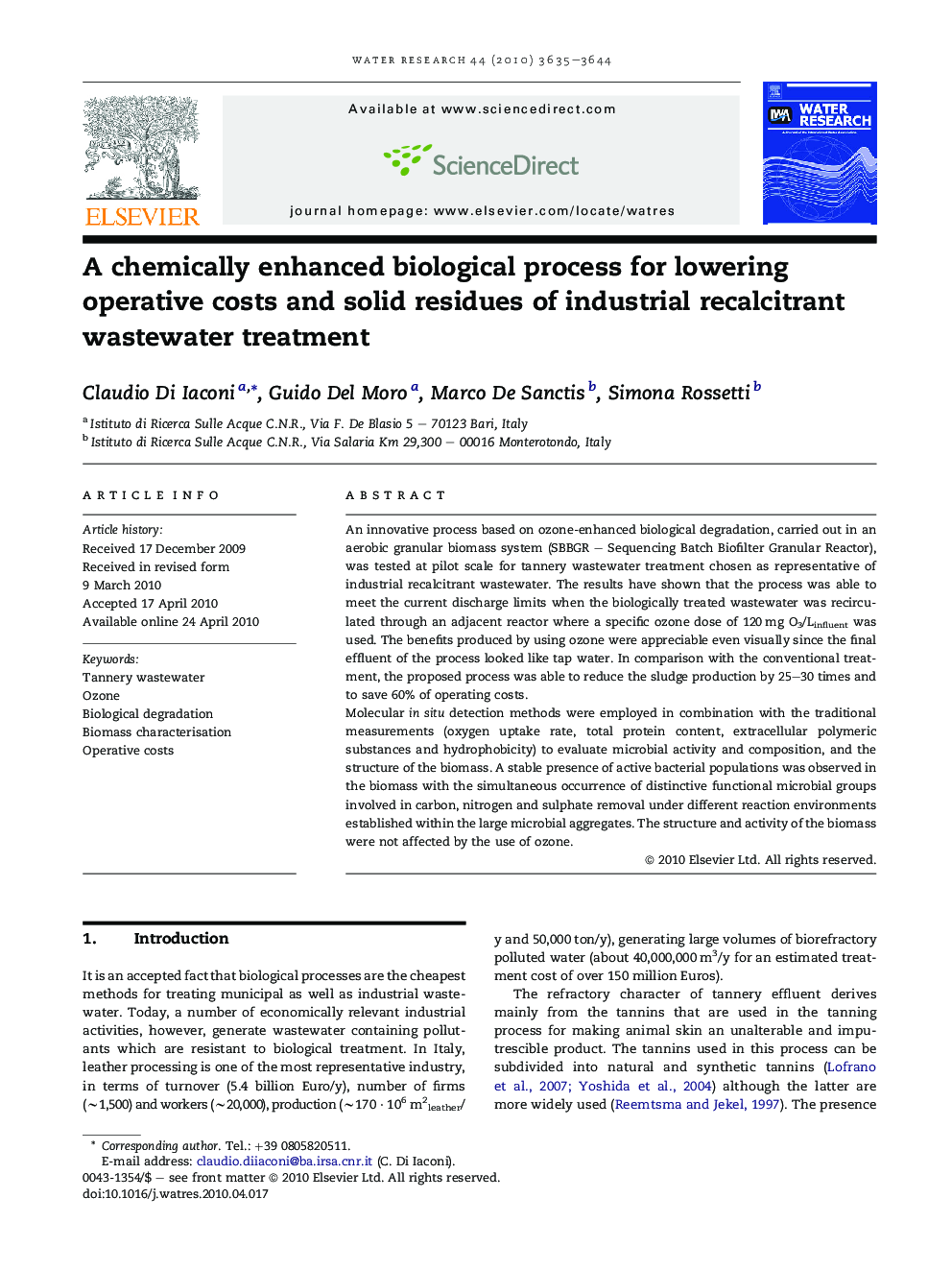| Article ID | Journal | Published Year | Pages | File Type |
|---|---|---|---|---|
| 4484061 | Water Research | 2010 | 10 Pages |
An innovative process based on ozone-enhanced biological degradation, carried out in an aerobic granular biomass system (SBBGR – Sequencing Batch Biofilter Granular Reactor), was tested at pilot scale for tannery wastewater treatment chosen as representative of industrial recalcitrant wastewater. The results have shown that the process was able to meet the current discharge limits when the biologically treated wastewater was recirculated through an adjacent reactor where a specific ozone dose of 120 mg O3/Linfluent was used. The benefits produced by using ozone were appreciable even visually since the final effluent of the process looked like tap water. In comparison with the conventional treatment, the proposed process was able to reduce the sludge production by 25–30 times and to save 60% of operating costs.Molecular in situ detection methods were employed in combination with the traditional measurements (oxygen uptake rate, total protein content, extracellular polymeric substances and hydrophobicity) to evaluate microbial activity and composition, and the structure of the biomass. A stable presence of active bacterial populations was observed in the biomass with the simultaneous occurrence of distinctive functional microbial groups involved in carbon, nitrogen and sulphate removal under different reaction environments established within the large microbial aggregates. The structure and activity of the biomass were not affected by the use of ozone.
